Country
Crash of a Beechcraft E90 King Air in Rawlins: 3 killed
Date & Time:
Jan 11, 2005 at 2145 LT
Registration:
N41WE
Survivors:
Yes
Schedule:
Steamboat Springs – Rawlins
MSN:
LW-280
YOM:
1978
Crew on board:
1
Crew fatalities:
Pax on board:
3
Pax fatalities:
Other fatalities:
Total fatalities:
3
Captain / Total hours on type:
414.00
Aircraft flight hours:
8921
Circumstances:
The air ambulance was dispatched from Steamboat Springs, Colorado (SBS), to pick up and transport a patient in serious condition from Rawlins Municipal Airport/Harvey Field (RWL) to Casper, Wyoming. Approaching RWL, the pilot initiated a right turn outbound to maneuver for the final approach course of the VOR/GPS approach to runway 22. On the inbound course to the airport, the airplane impacted mountainous terrain, approximately 2.5 nautical miles east-northeast of the airport. The airplane, configured for landing, struck the terrain wings level, in a 45-degree nose-down dive, consistent with impact following an aerodynamic stall. Approximately 5 minutes before the accident, RWL reported broken ceilings at 1,100 and 1,800 feet above ground level (agl), 3,100 feet agl overcast, visibility 2.5 statute miles with light snow and mist, temperature 33 degrees Fahrenheit (F), dew point 30 degrees F, winds 240 degrees at 3 knots, and altimeter 29.35 inches. Before departing SBS, the pilot received a weather briefing from Denver Flight Service. The briefer told the pilot that there was a band of light to moderate snow shower activity halfway between Rock Springs and Rawlins, spreading to the northeast. The briefer told the pilot there were adverse conditions and flight precautions along his route for occasional mountain or terrain obscurations. The pilot responded that he planned to fly instrument flight rules for the entire flight. The National Weather Service, Surface Analysis showed a north-south stationary front positioned along the front range of the Rocky Mountains beginning at the Wyoming/Montana border and extending south into north-central Colorado. Station plots indicated patchy snow over western Colorado and Wyoming. The most recent AIRMET reported, "Occasional moderate rime or mixed icing in clouds and precipitation between the freezing level and flight level 220." The freezing level for the area encompassing the route of flight began at the surface. Witnesses in the vicinity of RWL reported surface weather conditions varying from freezing rain to heavy snow. An examination of the airplane showed clear ice up to 1 ½ inches thick adhering to the vertical stabilizer, the left and right wings, the right main landing gear tire, and the right propeller. The airplane's aerodynamic performance was degraded due to the ice contamination, leading to a stall. An examination of the airplane's systems revealed no anomalies. A human factors review of interviews and other materials showed insufficient evidence that the company placed pressure on the pilot to take the flight; however, the review did not rule out the pilot inducing pressure on himself. FAA Advisory Circular (AC) 135-15, Emergency Medical Services/Airplane (EMS/A) addresses several subject areas not practiced by the operator, including, "Additional considerations when planning IFR flights include the following: (1) Avoid flight in icing weather whenever possible."
Probable cause:
The pilot's inadvertent flight into adverse weather [severe icing] conditions, resulting in an aerodynamic stall impact with rising, mountainous terrain during approach. A factor contributing to the accident was the pilot's inadequate planning for the forecasted icing conditions.
Final Report:
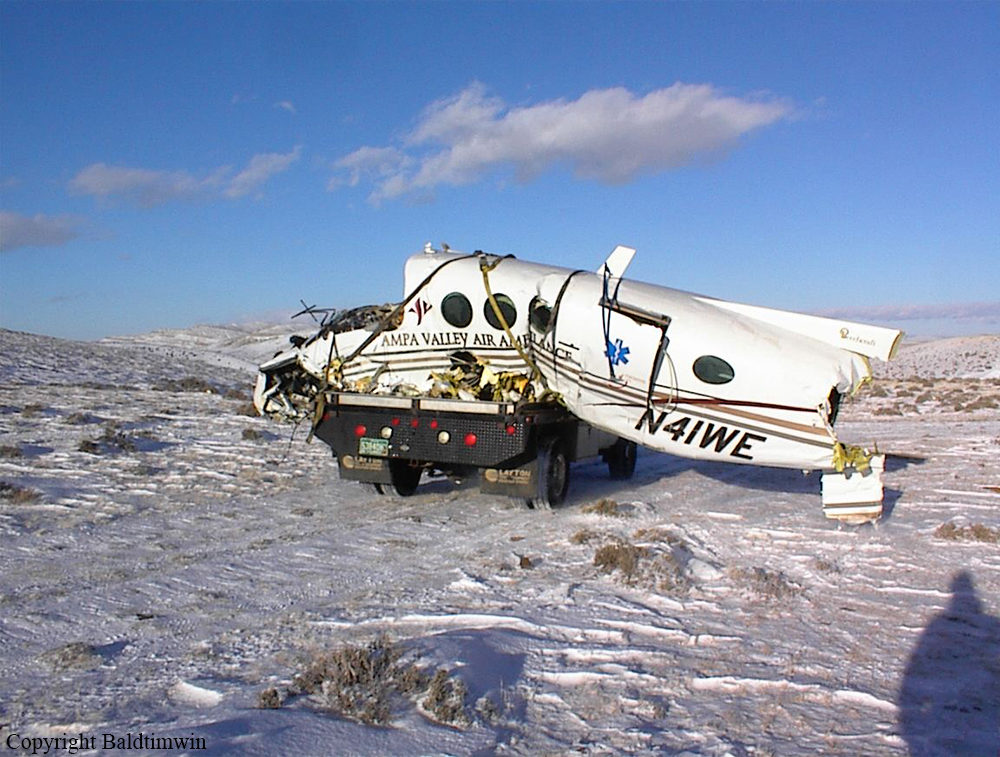
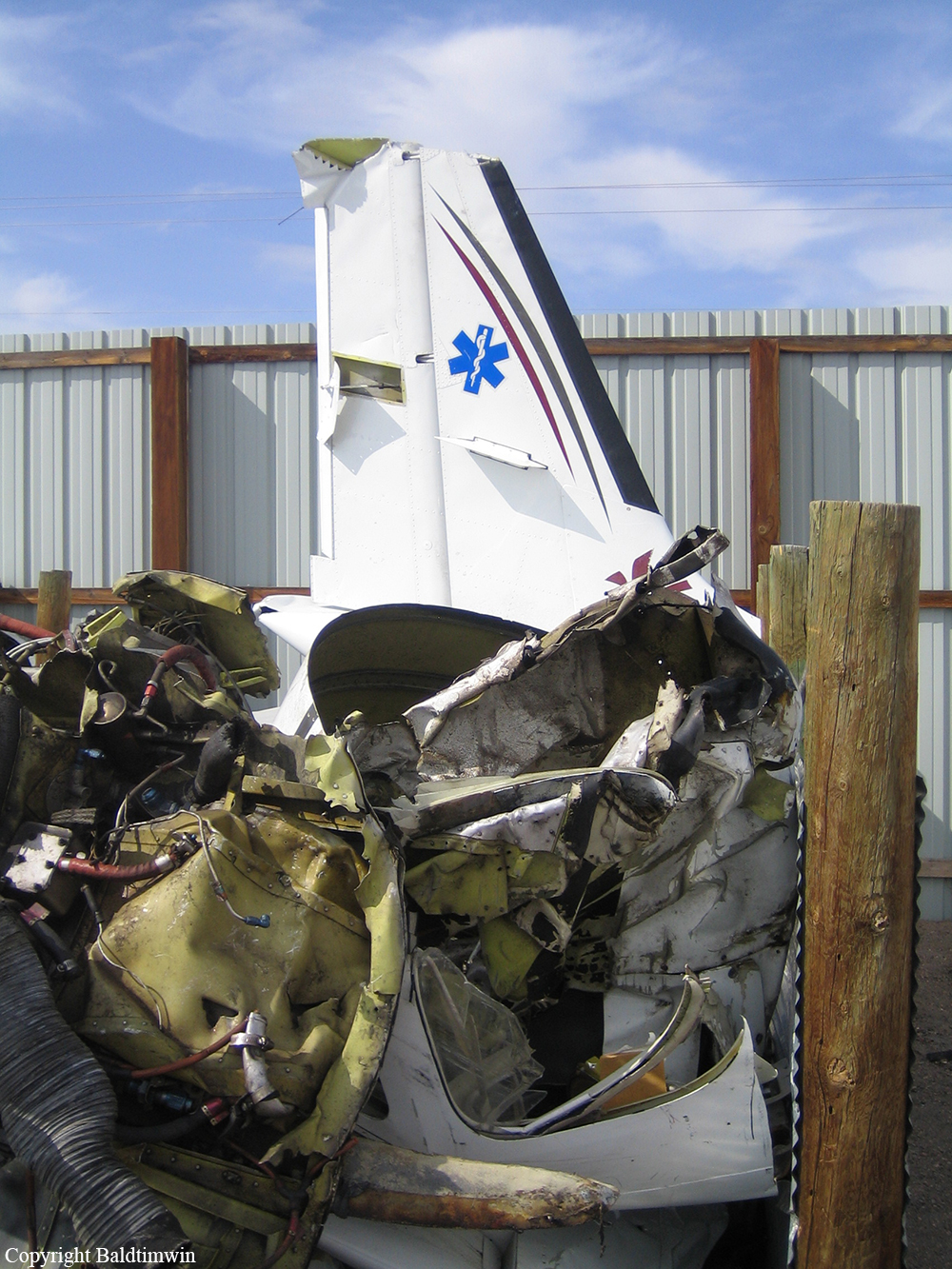
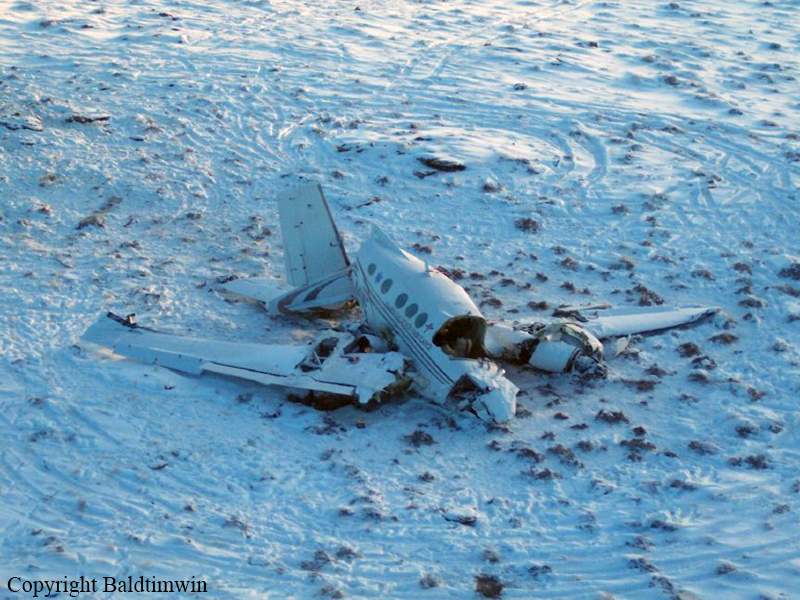
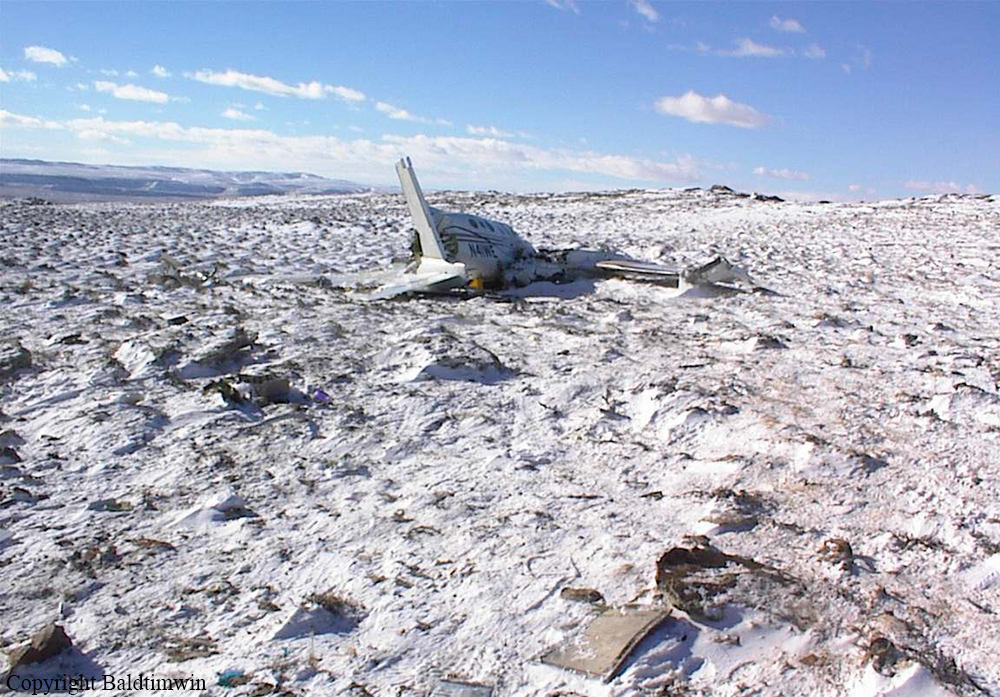
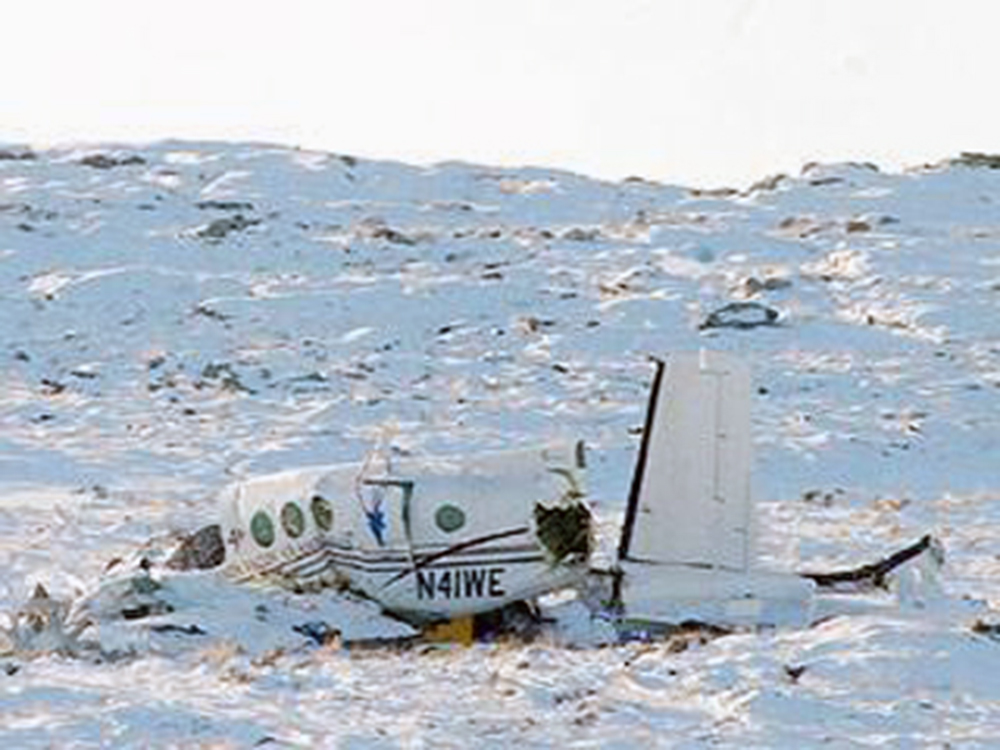
Crash of a Beechcraft A90 King Air in Montpellier: 3 killed
Date & Time:
Dec 24, 2004 at 0933 LT
Registration:
F-GVRM
Survivors:
No
Schedule:
Montpellier - Montpellier
MSN:
LJ-121
YOM:
1966
Crew on board:
3
Crew fatalities:
Pax on board:
0
Pax fatalities:
Other fatalities:
Total fatalities:
3
Captain / Total hours on type:
2610.00
Copilot / Total hours on type:
6
Aircraft flight hours:
6872
Aircraft flight cycles:
6816
Circumstances:
The crew departed Montpellier-Méditerranée Airport at 0802LT for a local training flight with TRI, one TRE and one pilot under supervision. Following a touch and go on runway 31R, the instructor decided to reduce the power on the right engine and to perform a low pass over the runway. Then the aircraft turned to the left, lost height, rolled to the left and crashed in a pond located to the right of the runway. The aircraft was destroyed and all three occupants were killed.
Probable cause:
The accident was the result of the crew losing control of the aircraft after a go-around. It is likely that this was the result of inadequate management of the flight controls while performing a one engine go-around and a too late a reaction from the examiner (TRE). The examiner's recent lack of experience in instruction on BE90 and his right-front position may have contributed to the accident. No technical anomalies was found on the aircraft and the loss of control occurred at low altitude.
Final Report:
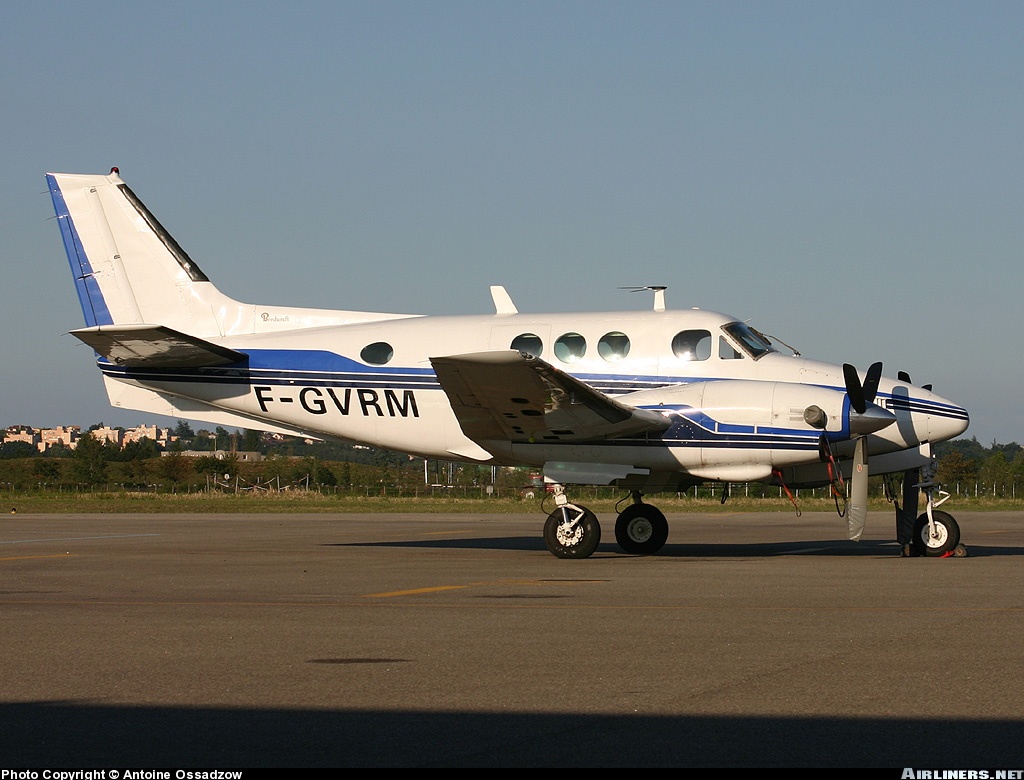
Crash of a Beechcraft A90 King Air in Pensacola
Date & Time:
Aug 17, 2004 at 1515 LT
Registration:
N45TT
Survivors:
Yes
Schedule:
Pensacola – Gulf Shores
MSN:
LJ-312
YOM:
1967
Crew on board:
1
Crew fatalities:
Pax on board:
1
Pax fatalities:
Other fatalities:
Total fatalities:
0
Captain / Total hours on type:
18.00
Aircraft flight hours:
10701
Circumstances:
The pilot stated that he was proceeding to a nearby airport to refuel, and during the takeoff from his departure airport, about 3 to 4 seconds after rotating, the right engine ceased operating due to fuel exhaustion. He said that the airplane drifted to the right, and he feathered the right propeller and turned to the right in order to return to the runway. After leveling, he said the airplane started to climb so he reduced power, and as he did so the airspeed dropped to 80 knots, and the stall warning light was activated. He said he added full power to recover, and the aircraft veered radically to the right in the direction of the hangars. Keeping the landing gear in the up position, he said he performed a belly landing and the airplane incurred damage.
Probable cause:
The pilot's inadequate planning/decision and his failure to maintain airspeed which resulted in fuel exhaustion and an inadvertent stall.
Final Report:

Crash of a Beechcraft C90 King Air near Madrid-Getafe AFB: 2 killed
Date & Time:
Feb 18, 2004 at 1130 LT
Registration:
E.22-03
Survivors:
No
Schedule:
Madrid-Getafe - Madrid-Getafe
MSN:
LJ-624
YOM:
1974
Crew on board:
2
Crew fatalities:
Pax on board:
0
Pax fatalities:
Other fatalities:
Total fatalities:
2
Circumstances:
The crew was completing a local training flight at Madrid-Getafe AFB when the aircraft crashed in unknown circumstances near Parla, about 8 km south of the airbase. The aircraft was destroyed and both pilots were killed.
Crash of a Beechcraft B90 King Air in Dodge City: 3 killed
Date & Time:
Feb 17, 2004 at 0257 LT
Registration:
N777KU
Survivors:
No
Schedule:
Wichita - Dodge City
MSN:
LJ-377
YOM:
1968
Crew on board:
1
Crew fatalities:
Pax on board:
2
Pax fatalities:
Other fatalities:
Total fatalities:
3
Captain / Total hours on type:
666.00
Aircraft flight hours:
9005
Circumstances:
The emergency medical services (EMS) airplane was destroyed by terrain impact and post impact fire about 7 nautical miles (nm) west of its destination airport, Dodge City Regional Airport (DDC), Dodge City, Kansas. The 14 Code of Federal Regulations Part 91 positioning flight departed the Wichita Mid-Continental Airport (ICT), Wichita, Kansas, about 0215 central standard time and was en route to DDC. Night visual meteorological conditions prevailed when the accident occurred about 0257 central standard time. The flight had been on an instrument flight rules (IFR) flight plan, but the pilot cancelled the IFR flight plan about 34 nm east of DDC and initiated a descent under visual flight rules. Radar track data indicated that the airplane maintained a magnetic course of about 265 degrees during the flight from ICT to DDC. The rate of descent was about 850 to 950 feet per minute. During the descent, the airplane flew past the airport on a 270 degree course. Witnesses in the area reported hearing the engine noise of a low-flying airplane followed by the sound of impact. One of the witnesses described the engine noise as sounding like the engines were at "full throttle." The on-site inspection revealed that the airplane impacted the terrain in a gear-up, wings-level attitude. The inspection of the airplane revealed no anomalies to the airframe or engines. A review of the pilot's 72-hour history before the accident revealed that it had been 14 hours and 32 minutes from the time the pilot reported for duty about 1225 central standard time until the time of the accident. It had been 20 hours 57 minutes from the time the pilot awoke (0600) on the morning before the accident until the time of the accident. No evidence of pilot impairment due to carbon monoxide, drugs, or medical incapacitation was found. The accident occurred during a time of day that was well past the pilot's normal bedtime and also at a time of day when the physiological need to sleep is especially strong. The findings from a Safety Board's human performance analysis indicates that the pilot was likely fatigued. A review of 14 CFR 135.267 indicated that the pilot had adhered to the flight time limitations and rest requirements specified in the regulation.
Probable cause:
The pilot failed to maintain clearance with terrain due to pilot fatigue (lack of sleep).
Final Report:
Crash of a Beechcraft C90 King Air near Homestead: 2 killed
Date & Time:
Jan 31, 2004 at 1632 LT
Registration:
N75GC
Survivors:
No
Schedule:
Marathon – Fort Lauderdale
MSN:
LJ-727
YOM:
1977
Crew on board:
1
Crew fatalities:
Pax on board:
1
Pax fatalities:
Other fatalities:
Total fatalities:
2
Captain / Total hours on type:
200.00
Aircraft flight hours:
8208
Circumstances:
The instrument rated pilot received three weather briefings on the date of the accident from the Miami Automated Flight Service Station. The pilot obtained his IFR clearance while airborne, was advised to climb to 9000 feet mean sea level (MSL), then later advised to descend and maintain 2000 feet, and to fly heading 030 degrees. Radar data indicates that following the instruction from the controller, the airplane made a right descending turn to a southeasterly heading, followed by a left turn to an easterly heading where the airplane was lost from radar while at 2,200 feet mean sea level. The crash was located 138 degrees and .38 nautical mile from the last radar target. Between 1631:04, and 1631:16, the airplane descended from 7,600 to 6,100 feet. Between 1631:16, and the last radar target 12 seconds later at 1631:28, the airplane descended 3,900 feet. Weather radar data indicates the airplane encountered video integrator and processor (VIP) Level 2, or "moderate intensity" echoes in the area of the in-flight loss of control. Approximately 10 and 20 miles east-northeast through southeast of the accident site, maximum echoes of VIP Level 5 to 6, or "intends to extreme intensity" echoes were noted. The strongest reflectivities were located 20 miles east of the accident site. Disintegration of the airplane was noted; there was no evidence of in-flight, or post crash fire of any recovered components. The full span of the left wing, left aileron, left horizontal, and left elevator were accounted for. A section of the right wing and right outboard flap was identified; the right wing was fragmented. Examination of the engine and propellers revealed no evidence of preimpact failure or malfunction. No determination was made whether the pilot met the instrument recency of experience requirement of 14 CFR Part 61.57 (c).
Probable cause:
The pilot's inadequate in-flight planning/decision which resulted in an encounter with rain showers and turbulence, a loss of aircraft control, and overstress of the airframe.
Final Report:
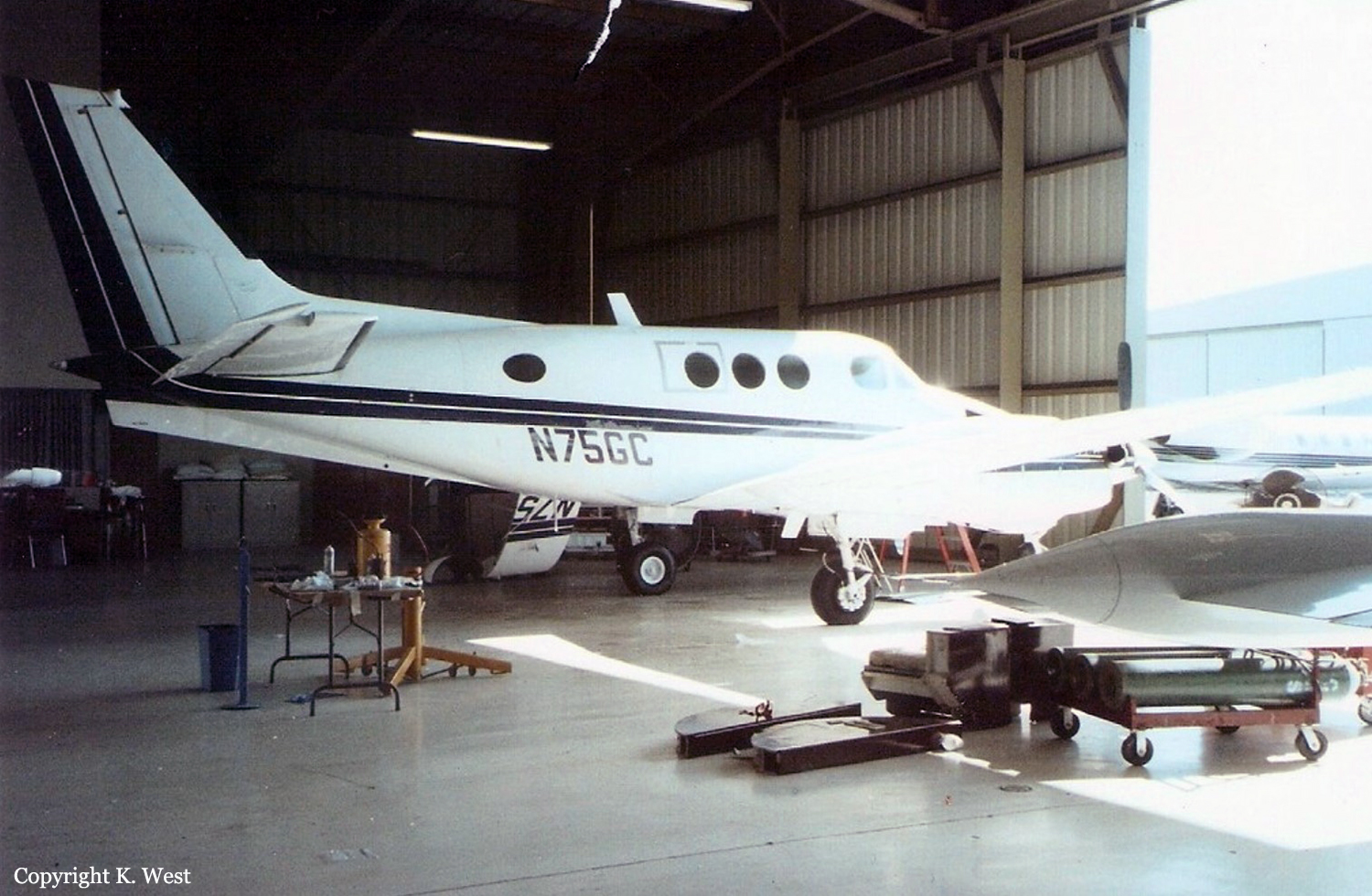
Crash of a Beechcraft A90 King Air in Fentress
Date & Time:
Oct 17, 2003 at 1530 LT
Registration:
N511BF
Survivors:
Yes
Schedule:
San Marcos - San Marcos
MSN:
LJ-179
YOM:
1966
Crew on board:
1
Crew fatalities:
Pax on board:
0
Pax fatalities:
Other fatalities:
Total fatalities:
0
Captain / Total hours on type:
247.00
Aircraft flight hours:
10399
Circumstances:
The airplane lost engine power during descent. The 1,127-hour pilot elected to perform emergency engine out procedures and prepared for an emergency landing. After impact, the pilot observed the right engine nacelle engulfed in flames, which then spread to the fuselage. Review of the engine logbook revealed the engine was being operated in excess of 1,000 hours of the manufacturer's recommended time between overhauls of 3,600 hours. The airplane received post-impact fire damage. Further examination of the engine revealed severe fire damage, but no mechanical deficiencies.
Probable cause:
The loss of engine power for undetermined reasons.
Final Report:





